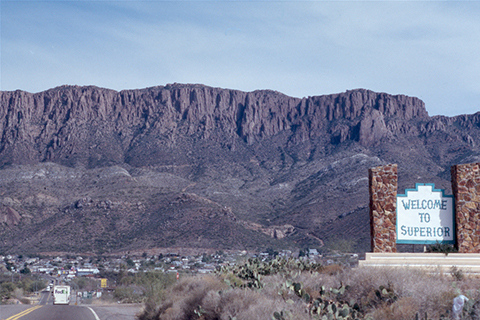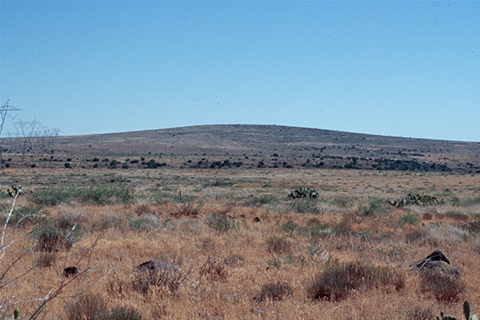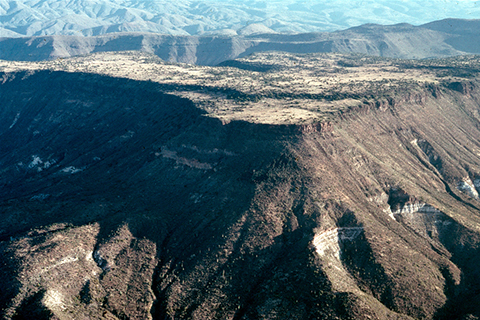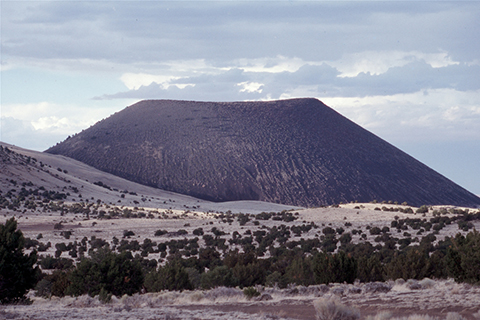Prelude
Like their plutonic relatives, volcanic rocks are igneous rocks that originally form from molten liquid rock or magma. Magma erupts onto the surface as lava in many different and distinct styles, and produces an assortment of volcanic rock types and structures. Magmas can erupt quietly or violently, depending on various factors, like magma composition, the presence of gas or water in the magma, etc.
As with plutonic rocks, certain minerals may start to crystallize as the magma cools. Each type of mineral crystallizes over a range of temperatures, with the first crystals forming at higher temperatures; followed by others at progressively lower temperatures until all the liquid magma is gone. The rapid rate of crystallization on the surface results in relatively small crystals. Sometimes the lavas cool so fast that they form volcanic glass that has no crystals or even erupt so violently that they are blown into particles of various sizes. The resulting rock is called volcanic (or extrusive), named after Vulcan, the Roman mythological god of fire (no relation to Spock). All this happens on/near the surface of the Earth, and may be observed first-hand by a volcanologist.
The most common way to identify volcanic rocks uses a qualitative field classification, which is a somewhat subjective judgment of the composition is combined with a visual determination of the volcanic rock texture. This methodology parallels that used for plutonic rocks in that we need to qualitatively describe the rock texture and composition. Volcanic rocks are texturally diverse, with many distinctive types that are relatively easy to recognize. However, while volcanic rocks are compositionally similar to plutonic rocks, the individual mineral crystals in volcanic rocks are commonly too small to identify, so the mineralogy (and thus, composition) is inferred from the rock color. Petrographic study of rocks in thin section![]() (a very thin slice of rock) using a specialized microscope is useful when more detailed information and a precise identification is required.Geochemical analysis involves the determination of the abundances of certain elements (like Si, Fe, Mg, etc.) and can be helpful, not only in classifying these rocks, but in describing their nature and origin
(a very thin slice of rock) using a specialized microscope is useful when more detailed information and a precise identification is required.Geochemical analysis involves the determination of the abundances of certain elements (like Si, Fe, Mg, etc.) and can be helpful, not only in classifying these rocks, but in describing their nature and origin
|
Figure 6-1. Volcanic rocks, structures, and landscapes of Arizona. Clockwise from upper left: the Apache Leap Tuff at Superior, Joes Hill shield volcano along the Agua Fria River, SP Mountain north of Flagstaff, and lava flows forming Skull Mesa north of Carefree. Remember to click on the highlighted images to see larger versions. |
|
What Will You Do Today?
A. Identifying & Interpreting Volcanic Rocks in the Field - Identify and interpret different kinds of volcanic rocks using a field classification method
B. Petrographic & Geochemical Classification of Volcanic Rocks - Name and intrepret volcanic rocks based on their petrographic and chemical data
C. Volcanic Rocks in Geologic Maps - Read and interpret geologic maps that include volcanic rocks
D. Geology of the Rhyolite Cliffs - Time to solve another geologic cross section mystery!




